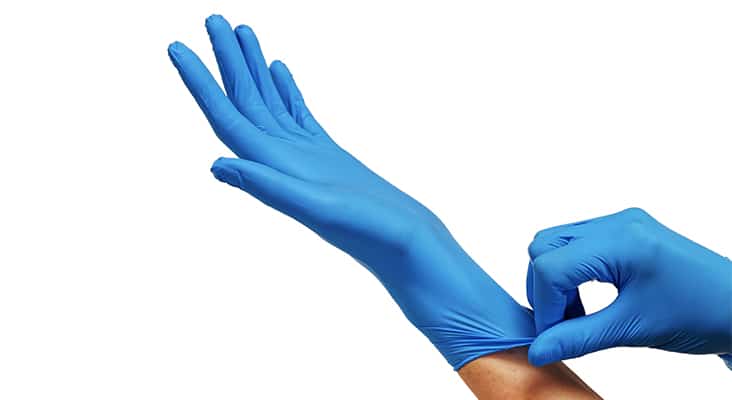
Survey of Medicaid Dentists Reveals Confidence Gap in Ability to Implement COVID-Related Changes
Medicaid dental providers face a confidence gap in their ability to implement COVID-19-related changes so they can safely serve adults and children in the most vulnerable communities, according to a new report.
Medicaid dental providers face a confidence gap in their ability to implement COVID-19-related changes so they can safely serve adults and children in the most vulnerable communities, according to a new report. The results highlight the need to evaluate Medicaid and other safety net dental providers amidst the challenges of the global pandemic.
The DentaQuest Partnership for Oral Health Advancement’s report, “Dental Care’s New Normal: Provider Survey Reveals the Need to Adapt and Redesign,” is a first-of-its-kind research based on a survey of more than 37,000 predominantly Medicaid dental providers. Approximately 4,000 dentists in 35 states and the District of Columbia completed the survey, which explored what kind of care their practices were currently offering, changes in the number of patient visits, the status of staff and finances, and their expectations for the future.
“We’ve seen data on how dentists are navigating the pandemic, but no one has looked specifically at the oral health safety net,” says Myechia Minter-Jordan, MD, MBA, president and CEO for the DentaQuest Partnership for Oral Health Advancement. “Medicaid dental providers are critical to ensure access to oral healthcare for millions of adults and children who otherwise wouldn’t have it. Understanding how Medicaid dental providers and the patients they serve have fared is the best way to ensure we can support dentists serving our most vulnerable communities.”
Dental professionals must take extra precautions to mitigate the spread of COVID-19 while providing care because the virus is spread through respiratory droplets, and dental procedures often require the use of high-speed instruments that aerosolize respiratory droplets. These disruptions and new ways of providing care are here to stay, according to survey respondents. Among those polled, 93% said they anticipated long-term changes in dentistry, including how care is provided, new infection control procedures, and the need to reassure patients that care will not raise their risk of contracting COVID-19. Providers also expect changes to the way clinical and nonclinical staff do their work (71%) and infection control procedures (69%).
More than half of the surveyed dentists anticipate greater staff concerns about occupational hazards (55%), while 50% anticipate a drop in patient trust. The results showed that 72% expected long-term changes in the number of patients seen on a typical day, and 41% indicated it will take six months or longer for business to return to pre-COVID-19 volumes. In addition, 16% were unsure of when they can expect to return to pre-COVID-19 volumes.
As dental offices reopen for elective procedures, practitioners recognize the need to implement new protocols to reduce the risk of COVID-19 transmission. However, the report identifies a gap between what providers say they need to do to reduce risk and their level of confidence that they can implement those changes.
When asked what’s important to do and what they are confident they can do, at least 10% of respondents indicated they are not confident they can implement any of the survey’s seven factors to reduce the risk of COVID-19 infection (screen patients for COVID-19 risk factors; screen staff for COVID-19 risk factors; clean and disinfect operatories; reduce the use of aerosol-generating procedures; reduce the spread of aerosols; secure proper personal protective equipment [PPE]; and properly use PPE).
According to the survey, while 65% of providers agree their practice should reduce the spread of aerosols, half (50%) were confident they could do so. In regard to PPE, 94% agreed they should secure additional PPE, but only 59% were confident in their ability to acquire adequate supplies. While 65% of respondents agree it’s important to perform fewer aerosol-generating procedures, only 55% are confident they can do so.
Redesigning care delivery with teledentistry can address many of these confidence gaps, such as PPE shortages, according to the report. Providers younger than 35 years of age, those working in Medicaid-oriented practices, and those anticipating long-term changes in dentistry were particularly likely to embrace telehealth platforms. Four in 10 providers are currently using telehealth platforms to increase access to care.
“Right now, we need more options to connect with patients differently than we have in the past, and teledentistry is helping us do that. Not only does it help ensure continuity of care for patients, it keeps both patients and providers safe and prevents potential exposures that could occur in traditional care settings. And teledentistry will become a bigger and more important part of oral healthcare in the future,” said Sean Boynes, DMD, MS, vice president, Health Improvement, DentaQuest Partnership for Oral Health Advancement, who added DentaQuest is seeing an increasing demand from patients, providers, insurers, and employers. “We’re working hard to expand our own efforts, and to influence the regulatory and policy changes that will provide more opportunities and improve the system overall.”
Boynes adds that another way to improve practitioner confidence is educating providers to prioritize minimally invasive options as a first line of care, such as silver diamine fluoride or atraumatic restorative treatments to reduce or slow caries without the need for high-speed handpieces that generate aerosols.
To help dental providers get back to work safely, DentaQuest recently partnered with Organization for Safety, Asepsis, and Prevention to create and distribute a comprehensive set of best practices for dental providers to ensure the safe return of elective dental care. The resulting Best Practices for Infection Control In Dental Clinics During the COVID-19 Pandemic is available here.

